Higher learning is a lot more attractive at these schools.
When she was a senior in high school, Ellie Norton toured about 15 college campuses with her mom. But the moment they drove up the hill at Kenyon College, in Ohio, she knew her search was over.
"It was so amazingly beautiful," says Norton, now 21, and a modern languages major at the school. "I just knew it was where I wanted to be."
In Pictures: The World's Most Beautiful College Campuses
What appealed to Norton about the tiny liberal arts college were the sweeping trees, the vast expanses of green and the way classic Gothic architecture blends in with the Midwestern-style houses on campus. "It's like the old part of campus has taken in its surroundings instead of alienating them," she says. "It feels like the campus is really part of Ohio."
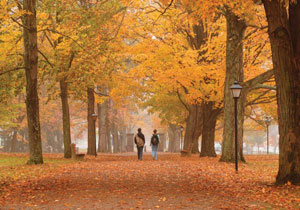
Kenyon College, Gambier, Ohio
Kenyon isn't just a looker compared to Midwestern neighbors. It's one of the best-looking campuses in the world, according to a panel of architects and campus designers interviewed by Forbes.
Architect Mike Evans, of the firm Hanbury Evans Wright Vlattas in Norfolk, Va., which has worked on campuses worldwide, says it's easier for smaller campuses like Kenyon College or Scripps College to stay beautiful and charming "without the pressure of large-scale change."
For larger universities, a "clear diagram of organization" and "a continuity of materiality" are key to safeguarding their beauty, says Evans. Schools like Stanford University and the University of Virginia have painstakingly managed to maintain their distinct aesthetic and true sense of place, despite extensive growth.
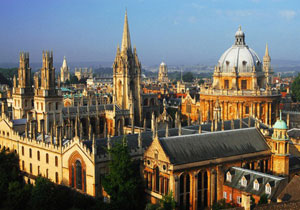
The University of Oxford, Oxford, England
Judge Natalie Shivers is currently overseeing the growth of another of our panel's favorite campuses, Princeton University. This classic American campus is "straight out of central casting," she says, pure collegiate Gothic, most of it executed in ivy-covered gray stone.
The University of Oxford made every architect's list, including that of David Mayernik, a professor at Notre Dame's School of Architecture. He calls the 11th Century campus, with its maze of cloisters, archways and pathways, "an architectural wonderland."
Kevin Lippert, publisher of the Princeton Architectural Press, which publishes the prestigious Campus Guide series, finds beauty outside of the Ivy Leagues.
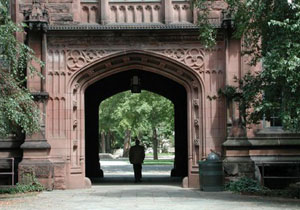
Princeton, Princeton, New Jersey
Lippert put the Air Force Academy in Colorado Springs high on his list, calling the campus, which was built in one fell swoop in the 1950s, "a tour de force of modern architecture." The Colorado Rockies as a backdrop doesn't hurt.
A powerful landscape can play a significant role in establishing a campus' character, says Aaron Schwarz, a principal at Perkins Eastman, a global architecture and urban design firm. The University of California at Santa Cruz, perched over the Pacific, is blessed with some good natural setting "genes," he says.
Sometimes a school benefits from its location in an urban environment, instead of mountains or ranch lands. The University of Bologna's campus is a city that dates back to the Roman Empire.
Most campuses deemed "beautiful" boast a "signature campus space," according to architect Mike Evans--an area that really defines the campus and its brand, like Thomas Jefferson's Lawn at the University of Virginia.
At Kenyon College, the signature space is a 10-foot-wide trail called The Middle Path, which doubles as central artery and village green for the campus. "In the fall," says Ellie Norton, "there's no place like it."
World's 5 Most Beautiful College Campuses
1. Kenyon College
Gambier, Ohio
Mike Evans, a principal at Norfolk, Va., design firm Hanbury Evans Wright Vlattas + Company, says to be beautiful a campus must have a "signature campus space as a carrier of the campus brand." At Kenyon College, that space is "Middle Path," a 10-foot-wide footpath that serves as the Gothic hilltop campus' central artery. More than just a trail, it's a village green for the tight-knit campus community. Sergei Lobanov-Rostovsky, who teaches 17th-century poetry at Kenyon, says the college, both isolated and pastoral, is "a small place to think big thoughts."
2. Oxford University
Oxford, England
Teaching within Oxford's stone walls dates as far back as the 11th century, and the school is considered a paradigm for all college campuses. With its labyrinth of quads, cloisters, and archways, it evokes elegance and tradition at every turn. "Its monastic roots and the spectacular quality of its buildings make it an architectural wonderland," says David Mayernik, associate professor at Notre Dame's School of Architecture. The famous Radcliffe Camera, built in 1737 as a Science Building, and now a hushed reading room for students, is "the most covetable university building in the world."
3. Princeton University
Princeton, N.J.
This classic American campus is "straight out of central casting," says architect Natalie Shivers, who has been guiding the prestige Ivy Leaguer through an ambitious expansion plan. Princeton's style is pure Collegiate Gothic; most of it executed in gray stone covered in, yes, ivy. As imposing as these old stone structures are, the campus keeps life on a "human scale" by preserving green spaces and "walkability," says Shivers. "Everything on campus is within a 10-minute walk." Sinuous footpaths, archways, plazas--all are designed to inspire spontaneous discussion and learning.
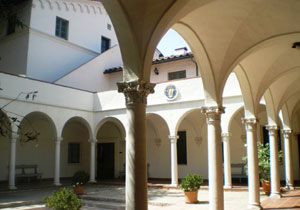
Scripps College, Claremont, California
4. Scripps College
Claremont, Calif.
The total plan of this women's college, founded in the 1920's, has always called for artistic connection between buildings and landscape. Together, architect Gordon Kaufmann, in collaboration with landscape architect Edward Huntsman-Trout, created a distinctively Southern Californian blend of Mission Revival-inspired architecture and landscape, which is lovely, evocative and intact. An expert in deciduous trees, Trout planted rows of liquid amber trees to give the students "a sense of autumn" come fall. He also peppered the campus with tulip trees, sycamores, almond and orange trees, as well as rare shrubs.
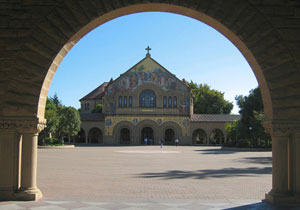
Stanford University, Palo Alto, California
5. Stanford University
Palo Alto, Calif.
Architects like Aaron B. Schwartz, Principal and Director of Perkins Eastman, an international design firm, praise Stanford for staying "cohesive" despite extensive growth, and for always respecting and staying loyal to "its initial design precepts." New additions like the Science and Engineering Quad manage to gracefully blend modern and technological elements with the timeless, elegant aesthetics of the campus' early California Mission Revival architecture. Architect Mike Evans lauds the campus' "continuity of materials, color and scale" over time. The campus also scores big points for its dramatic entrance via Palm Drive, its romantic Spanish red-tile roofs and myriad patches of green.
没有评论:
发表评论